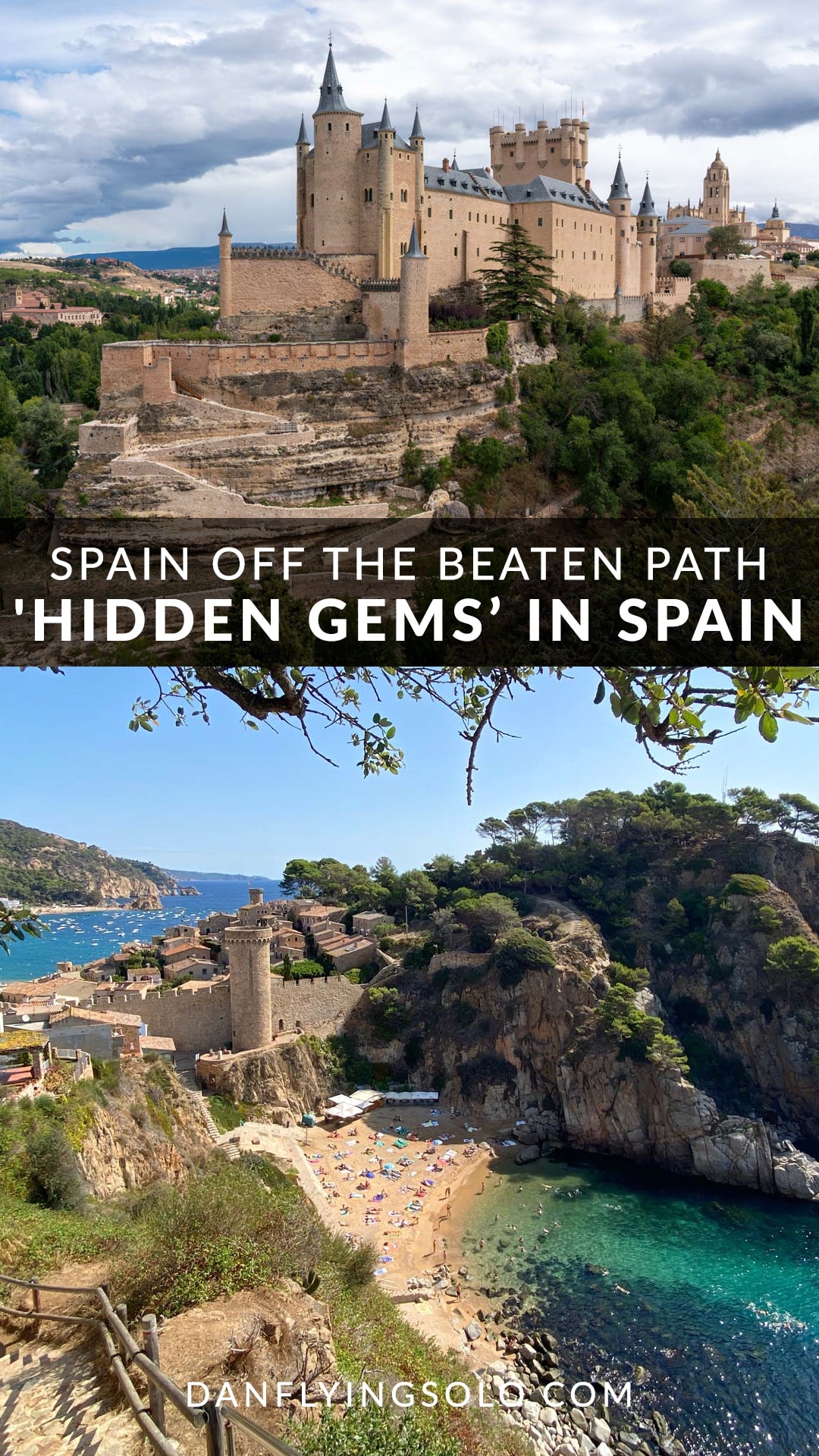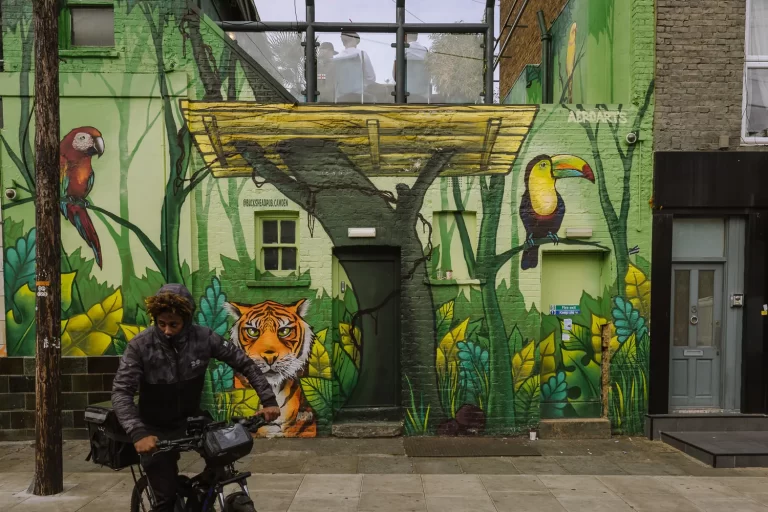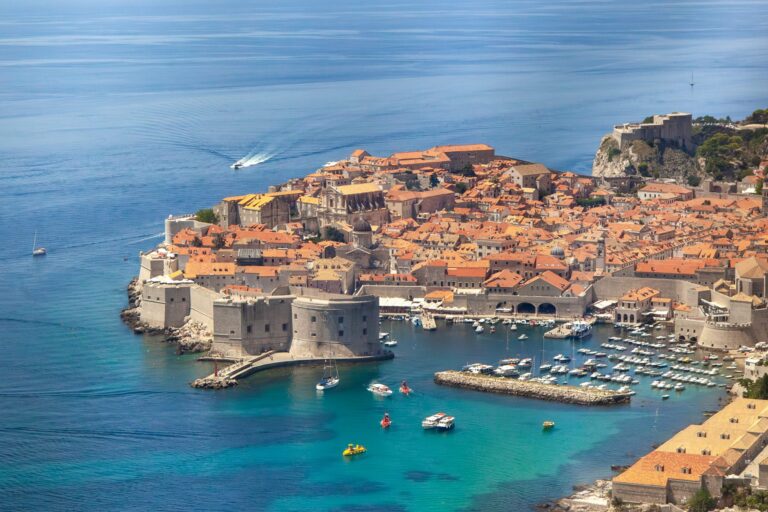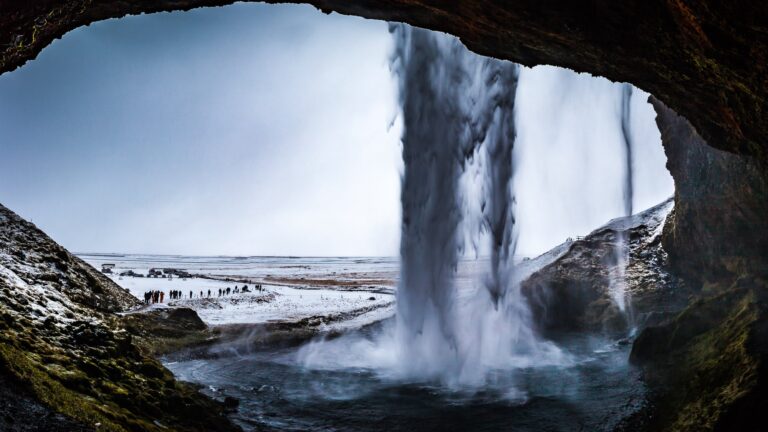Best Hidden Gems in Spain: 21 Unique Places to Visit in Spain
The addictive echo of feet stamping to a flamenco rhythm. Those first rays of daylight breaking over jagged peaks. Bar tops drowning in Pintxos. Waves gently lapping against tranquil islands. A plethora of architectural styles from centuries gone by.
Welcome to secret Spain – where the nation’s world-famous monuments aren’t the only things worth visiting.
Going off the beaten path in Spain is arguably not hard – especially when there are so many best cities in Spain to visit. This creates the dilemma of planning your time, as it would be easy to spend multiple visits just seeing the most famed corners of the country. In a land where the culture and landscapes are as delicious and varied as the regional dishes, there really isn’t a bad spot to visit.
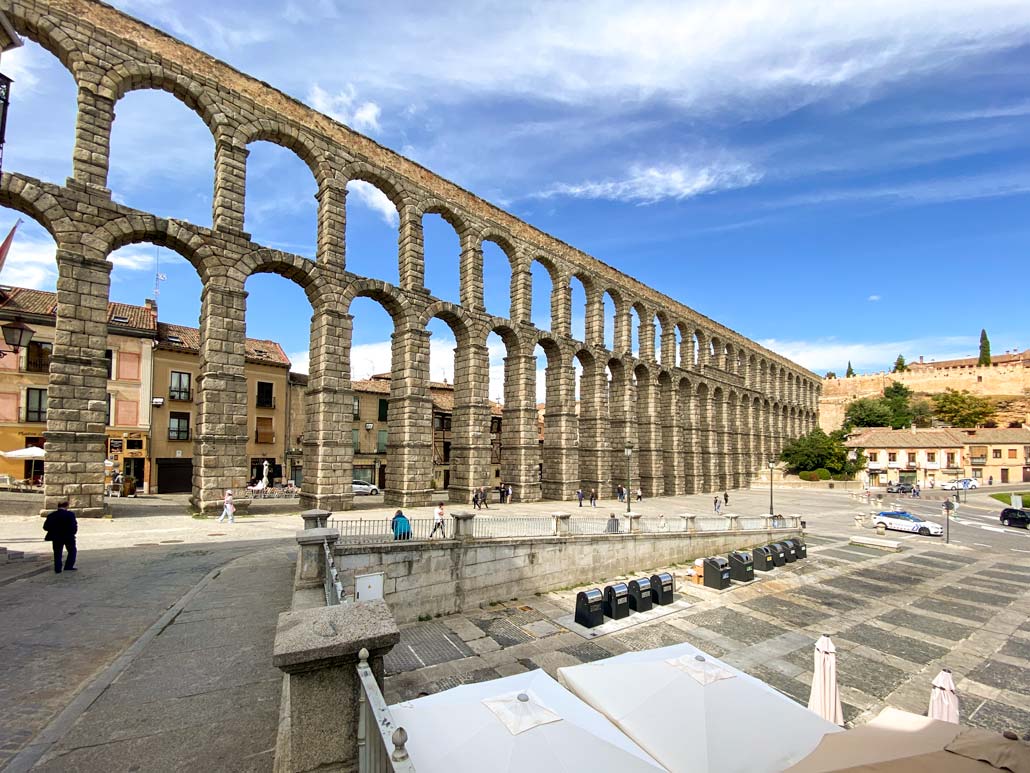
One of the greatest pleasures about living in Portugal has been popping over the border to discover more of my Iberian neighbour and the best unique places to visit in Spain.
While for many Spaniards, this list of hidden gems in Spain might seem rather obvious, for my fellow friends in the UK & USA, I hope you’ll find somewhere a little more off the beaten path in Europe from some of my favourite secret Spain destinations I’ve been lucky enough to visit over the last few years.
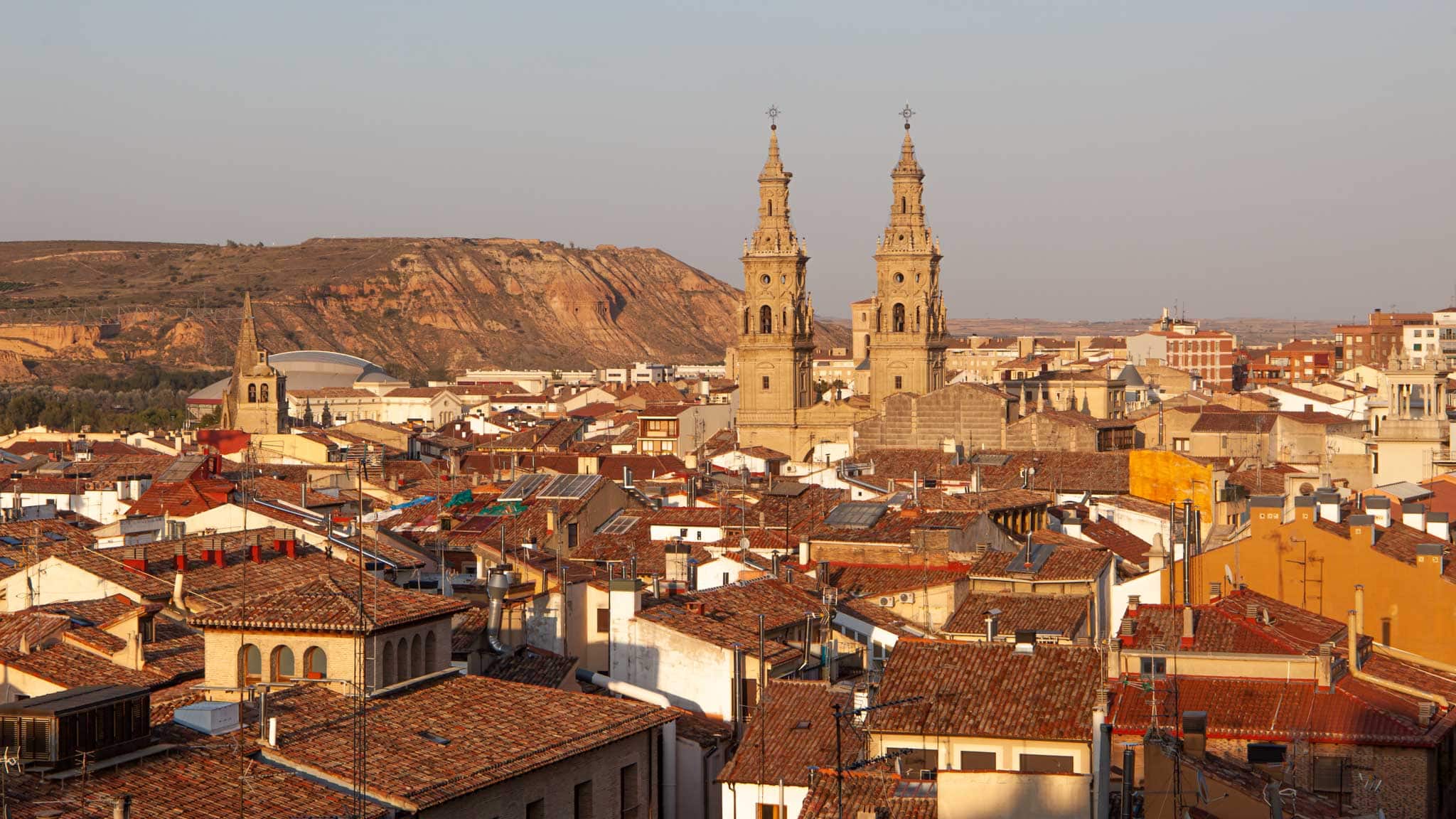
Logroño, for a pinchos bar crawl
Welcome to Logroño, the capital of the Rioja wine region. Here, the atmosphere is sure to charm you – especially after your first pincho crawl. It might not be much of a hidden gem in Spain to in-the-know visitors, but for those that usually flock to the south, the wine culture of the North will be a welcome change of scenery!
Pinchos, bite-sized skewers of food, are often served on top of bread. With delicious mixes of meat, cheese, seafood, and local flavours, they are best washed back with a glass of local vino tinto. Head to Calle Laurel, pick a starting point and hop between hole-in-the-wall spots. It’s like a typical bar crawl, but the food is the focus.
Dishes are either passed through the window or enjoyed at the bar top in places oozing with character. You’ll be in outstanding company, as this is a favourite past-time of the locals too. For the best bite in each place, ask what the signature dish is – each establishment will have its own famed option.
Beyond stuffing your face, the Rioja Museum, ancient church, and impressive Cathedral will fill your time between the lunch and evening pincho crawls!
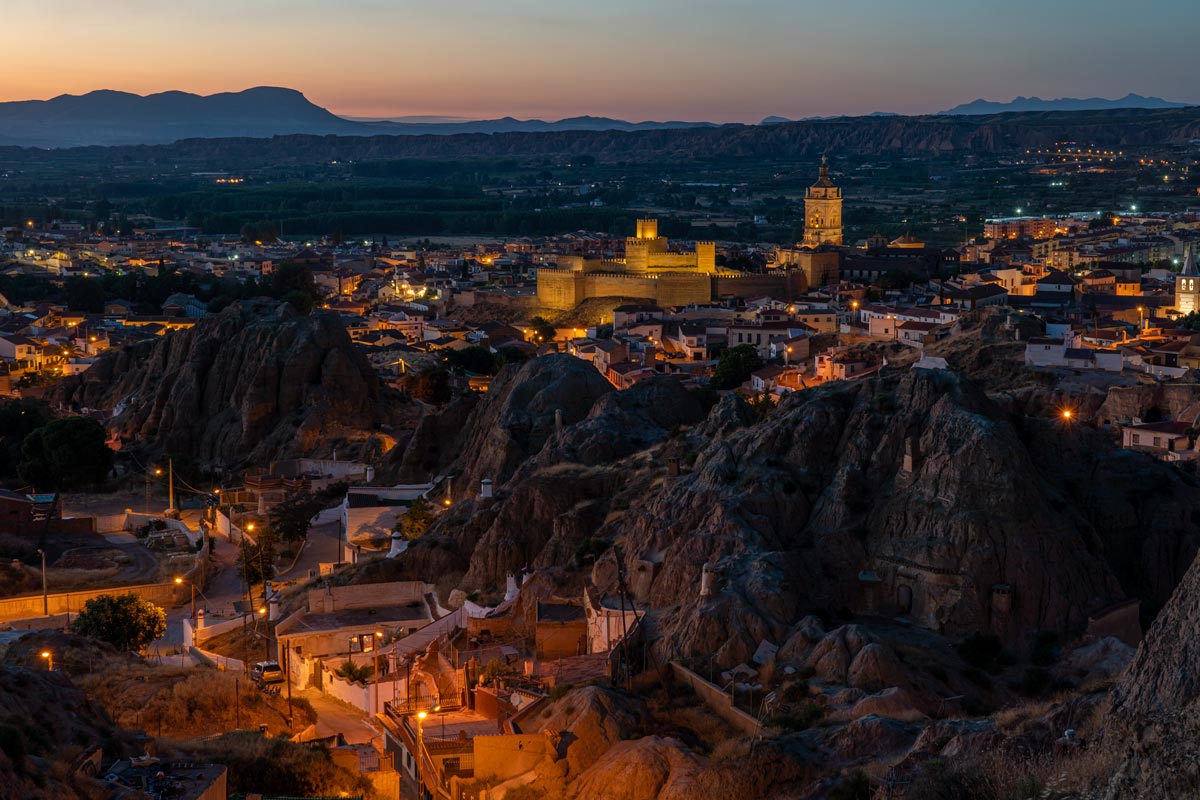
Guadix, for the caves
Have you ever slept in a cave home? Well, here is your chance.
Guadix – compared to the many other popular destinations nearby – remains a bit of a hidden Spanish gem. Set in the semi-arid interior of Andalusia, this is one of the country’s oldest settlements. It’s a small place with a significant history.
All the usual suspects have called this place home, from the Phoenicians and Carthaginians to the Romans and the Moors. Later. Late, it would become a mining town. Now, it’s one of the most unique places to visit in Spain
But nowadays, it’s an ideal side trip from the likes of Granada. While it’s not a destination for big-ticket attractions, there is a unique atmosphere in these sun-parched lands that feels like another time.
To add to that magic, many of Guadix’s caves now serve as tourist accommodations – a side effect of populations migrating to the cities. The Barrio de Cuevas is the most emblematic neighbourhood. Here, you’ll see chimneys rising from the rocks and climbing out from the underground world – it’s literally hidden Spain. Residents constructed these cave homes to survive the elements. Cool in the scorching summer sun and insulated under the winter blanket of snow.
It’s a pretty cool to experience this age-old tradition on an overnight visit.
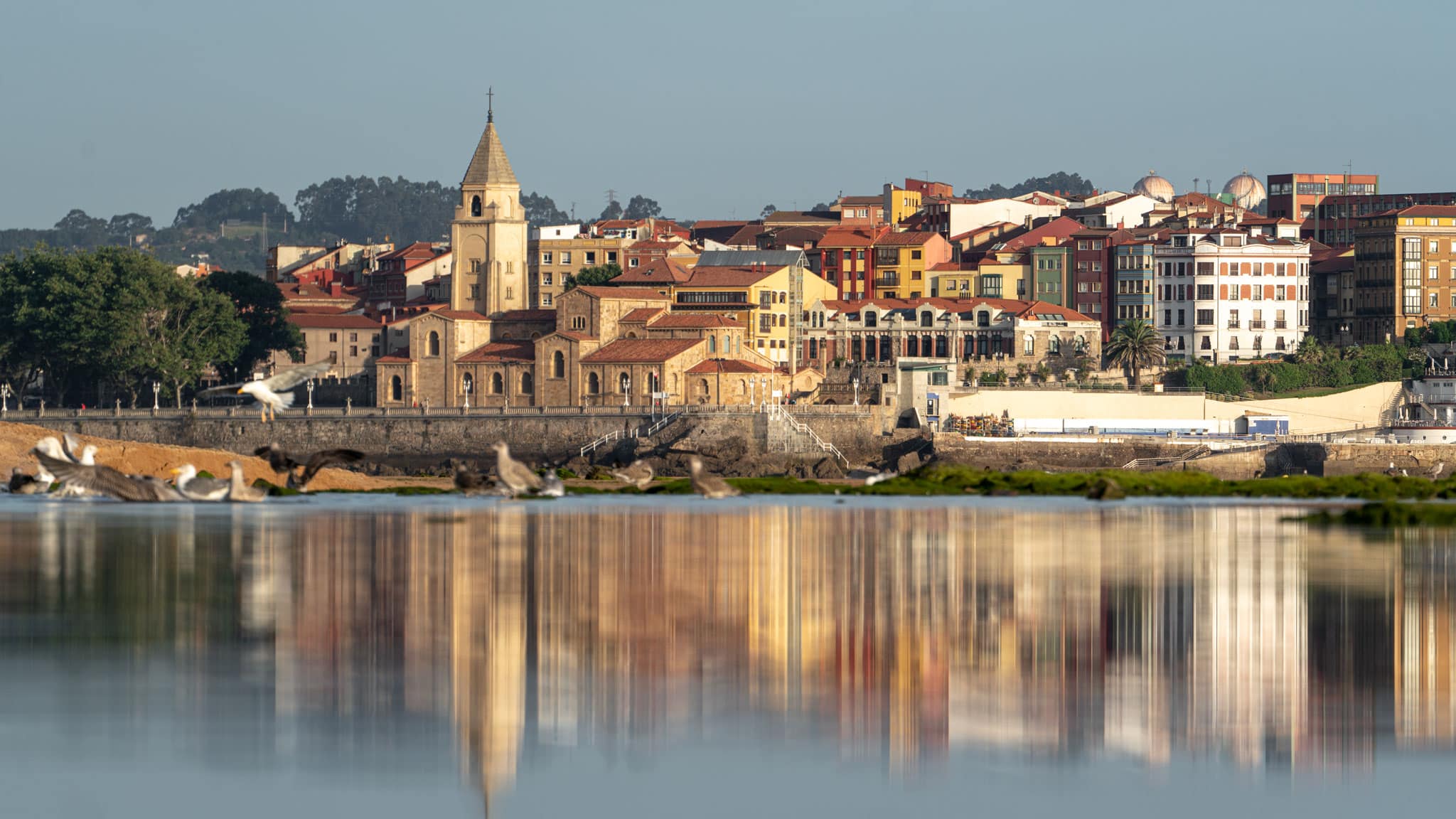
Gijón, for a northern-Spain beach escape
Nestled on the lush ‘Green Coast’ of northern Spain, Gijón has become a favourite beach escape for both local Asturians and Spaniards from further afield.
Lured in by the curved bay, golden sands, and gently lapping sapphire waves, it’s a refreshing escape when the mercury start’s going above 40 degrees in the country’s south. If you’ve ever experienced the sometimes unbearable heat in Andalusia, you’ll understand why Asturias is the summer place to be.
While it’s not really off-the-beaten-path Spain for most locals, international tourism is still growing here. I found this meant the city felt much more ‘lived in’ than some of the country’s most touristed spots.
Grab your towel and head to the beach. Admire the city’s Art Nouveau architecture. Venture underground to the old Roman Baths. Head along the coast on day trips to small villages such as Cudillero. Drink all the sidra – Asturia’s famed local cider is a treat. Then, for an extra hidden Spain spot, visit the Laboral Ciudad de la Cultura, Spain’s largest building with a problematic past.
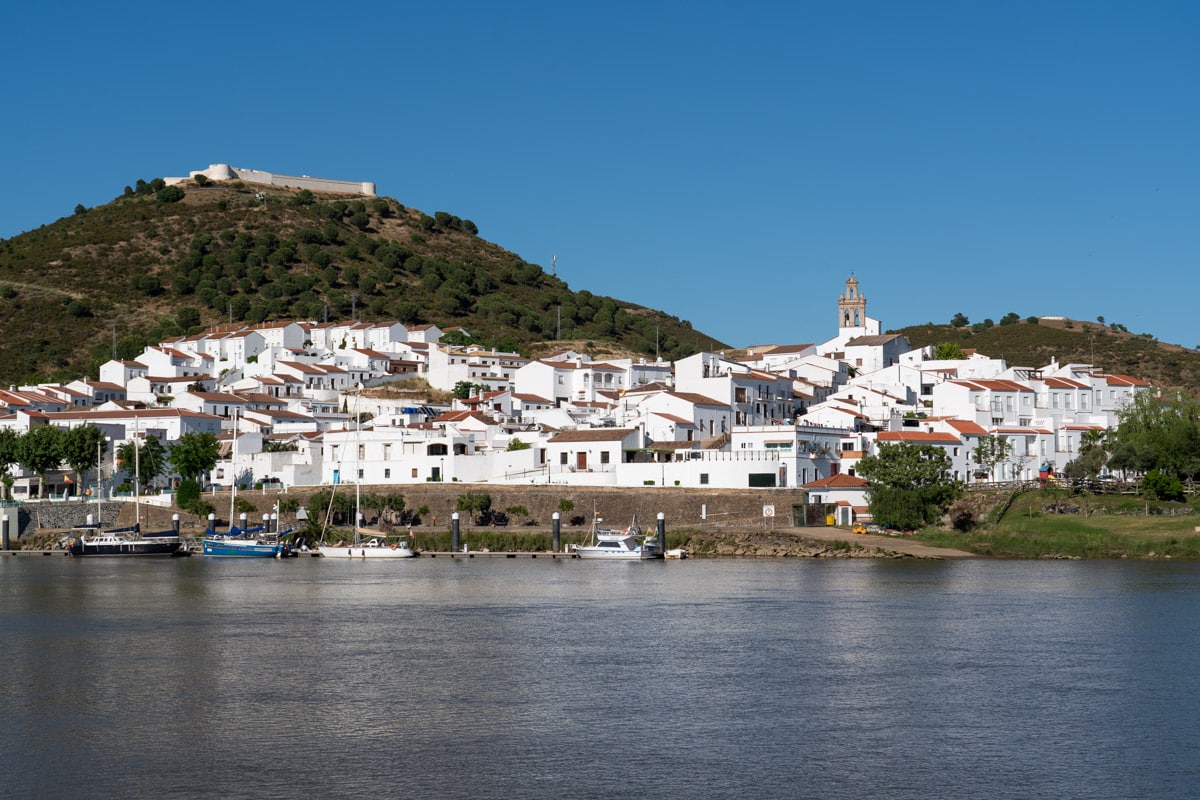
Sanlúcar de Guadiana, for the ‘smugglers’ festival and zip line
Sanlúcar de Guadiana, in a near-permanent slumber along the Guadiana River, may seem like your traditional whitewashed village at first glance. But this little spot on the Andalusia border with Portugal has two secret Spain reasons to visit.
The first thing which makes this one of the more unique places to visit in Spain is the chance to cross the Spain-Portugal border – and a timezone – on a zip line. Limite Zero operates a high-speed crossing above the river, delivering you to Alcoutim – the Portuguese village counterpart – at a speed of nearly 70 kilometres per hour. You can then kayak or hop a river taxi back.
That’s not the only way to cross this river, though, and the second reason to visit this secret Spain spot is courtesy of contraband past. For a long weekend at the end of March, the villages on both sides of the border unite once more to celebrate their shared smuggling history. In days gone by, these illegal practices were rife at specific points across the river – including here.
Nowadays, you don’t need to hide your souvenir shopping, with entertainment, food stalls, music and even ‘border guards’ in costumes adding to the celebrations. A purpose-built floating bridge is erected for the festival, allowing free-flowing foot traffic between the two villages, even if it is just for a weekend.
While for much of the year, Sanlúcar de Guadiana may not be such a unique place to visit in Spain, for these few days at least, it becomes something of a hidden Spain spot.
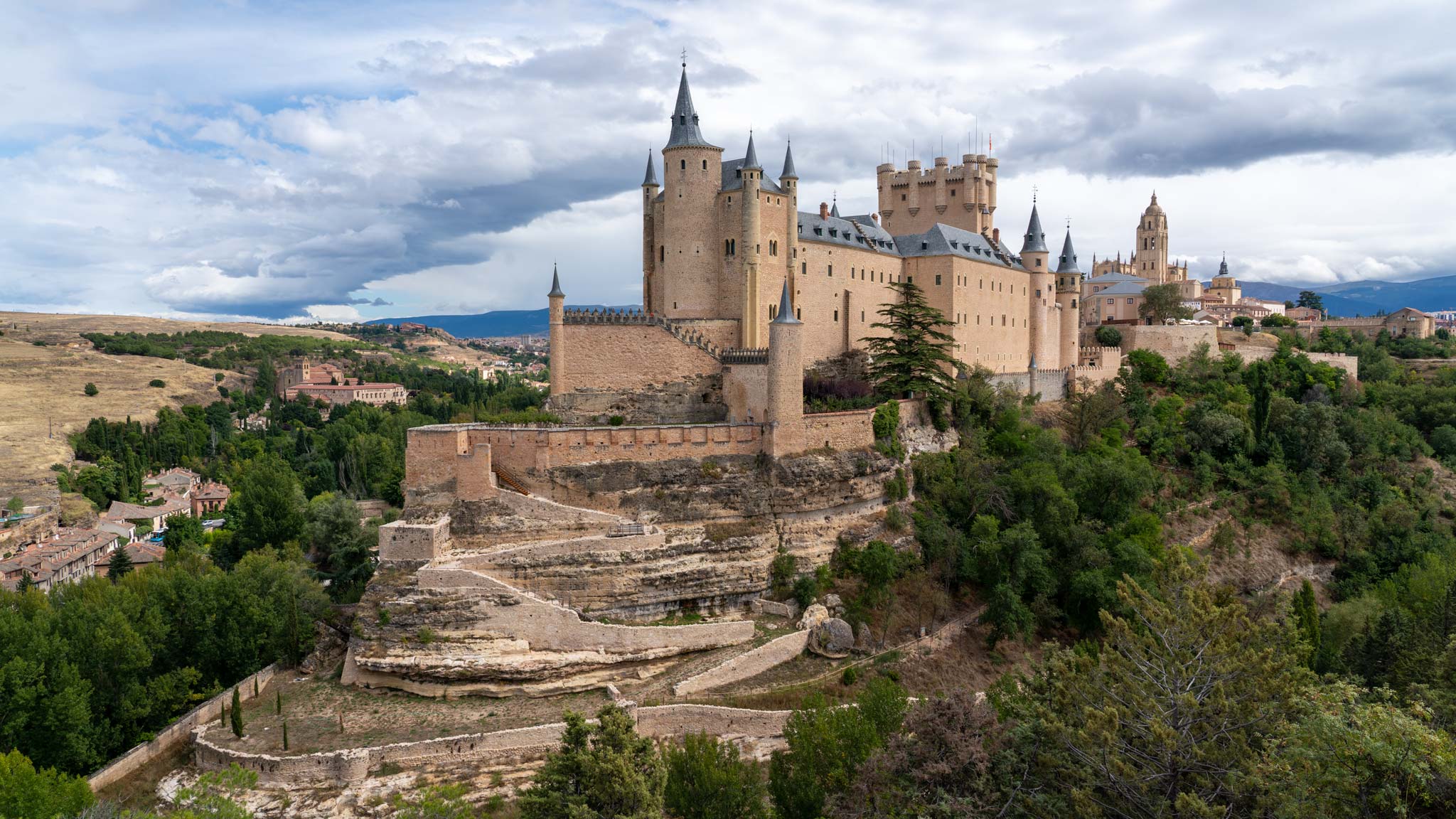
Segovia, for an architectural feast
Segovia is an easy day trip from Madrid – although you may want to spend longer – and one of my most recent lesser-visited Spanish destinations.
A visit to Segovia will reward you with a whole host of architectural gems, so be sure to pack the camera.
The almost Disney-like Alcázar de Segovia, dating from the 12th century, has been restored. Over the years, it has served as a fortress, castle, and even a prison. Now, inside, you’ll find an interesting museum. However, if you seek the best views, scramble up the hill across the other side of the road to the Mirador del Alcázar.
Other notable sights are the vast and impressive Roman aqueduct and the Cathedral, which towers above the rest of the city. The perfectly presented Royal Palace of La Granja of San Ildefonso sits just outside the city proper.
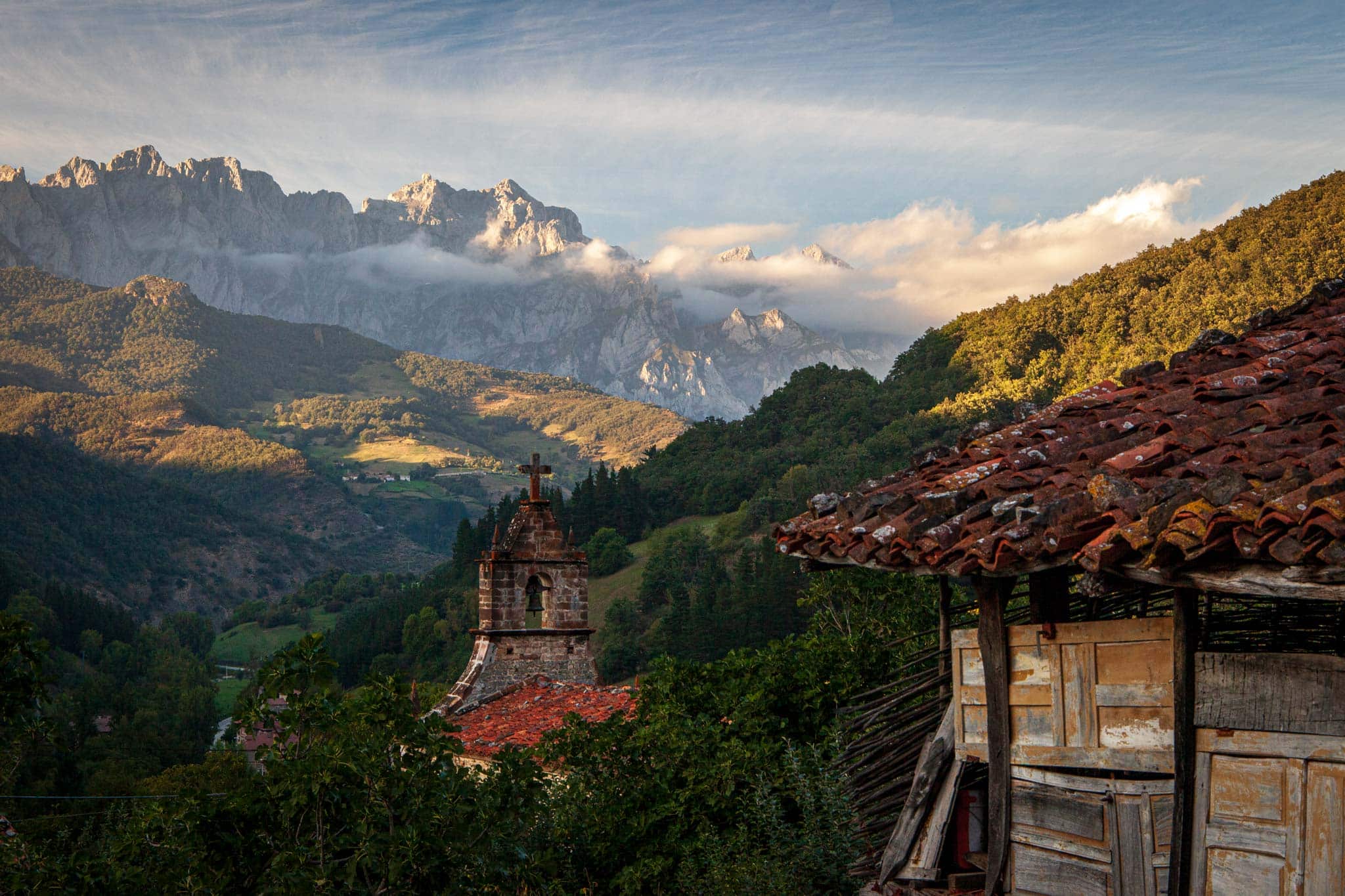
Picos De Europa, for epic hikes
In my opinion, Picos de Europa should be up there with the Dolomites. When it comes to epic mountains and hiking locations in Europe, this is a winner.
Spanning across three different regions (Asturias, Cantabria, and León) in the north of Spain, this natural playground is perfect for both epic multi-day hikes – caminos – or simply go village hopping to find your secret Spain and admire the views by car. Laden with nature, this is a unique place to visit in Spain due to its endemic fauna and flora.
Torre de Cerrado, the highest peak of the range, only reaches an elevation of 2650 metres. Still, even experienced mountain hikers can’t deny the beauty of this protected park.
Pick a hike, breath in the fresh air, and soak up a completely different side of Spain. There are plenty of dreamy villages, with stone houses and epic vistas, such as Cosgaya, to make a day-hike base. Alternatively, camping parks and camino routes make for a great multi-day trip to discover more hidden Spain.
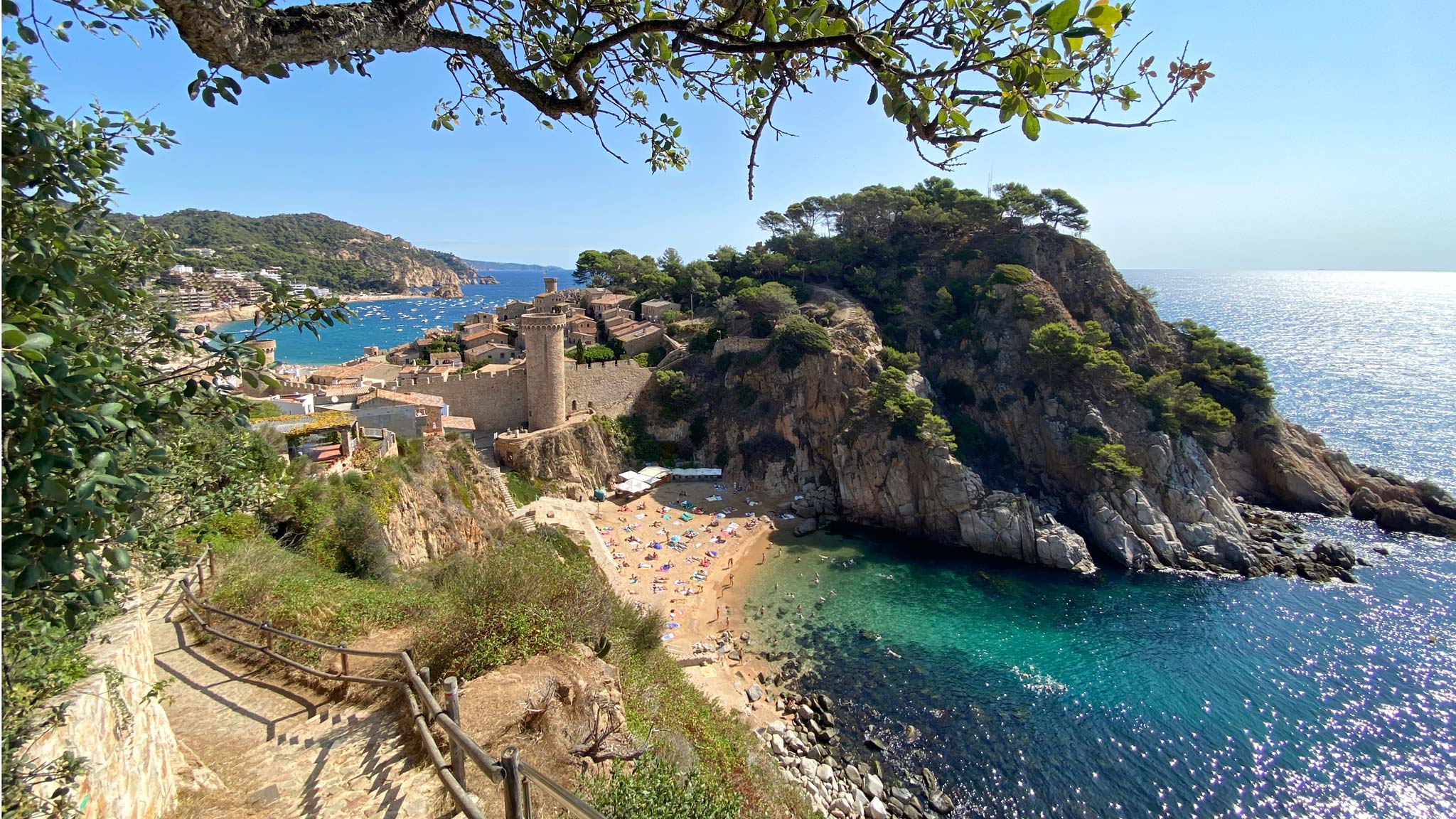
Tossa de Mar, for a beach escape
The Costa Brava has long been a popular destination for visitors seeking sunshine, fun, and a cold beer – so including somewhere from this stretch of coast on a list of Spain, hidden gems is a bit of a stretch.
However, I adored this place, and thanks to the medieval fortress of Vila Vella, which rises above the sandy bays on either side, it has something a little more special to it than the modern high-rises beach resorts that we often associate with the southern Spain coast.
Of course, there are countless more adorable villages and Spanish hidden gems along this stretch of coast. Cadaqués, Palafrugell and Lloret de Mar are just three others worth a vist.
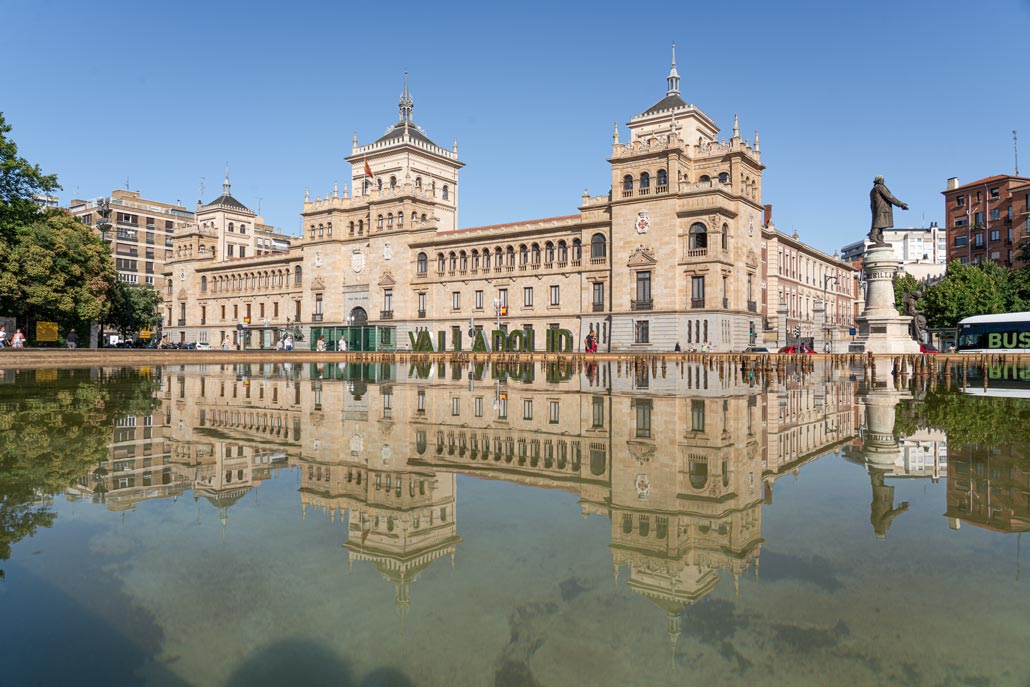
Valladolid, for vino and Renaissance architecture
Unless you’re knowledgeable about Spanish wines, or sacred art, Valladolid likely is a bit of a secret Spain spot for most.
The city isn’t far from Madrid by high-speed rail, and once here, you’ll find a land dedicated to the good stuff.
With five Designation of Origin (DOP) appellations – and twenty grape varieties – within Valladolid province, it’s a wine enthusiast’s paradise. While the vines might be aged, the city’s energy remains relatively youthful. We can thank the large student population of one of Spain’s oldest universities for that.
Valladolid’s main attraction, though, is the sacred art. At the Museo Nacional de Escultura, multiple religious sculptures focus on Semana Santa (Holy Week). While the art might not be to everyone’s taste, the architecture is exquisite. The 15th-century building was originally the Colegio de San Gregorio.
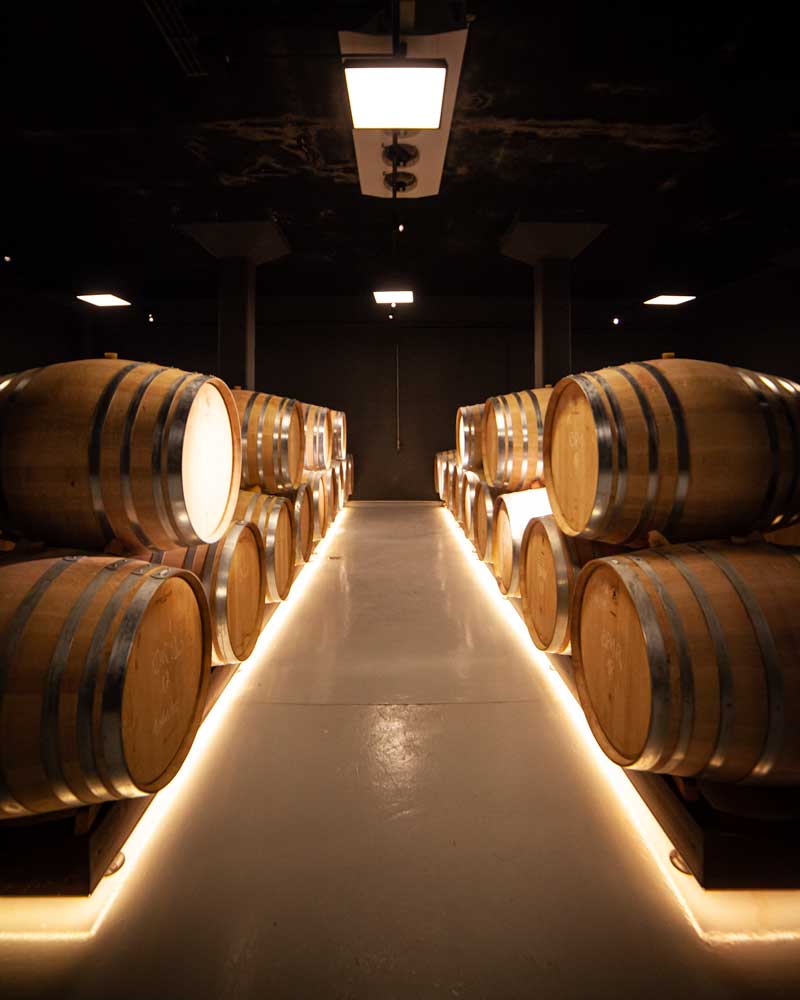

Murcia, for a mouthwatering wine route
One of my favourite hidden Spain, spots both the region of Murcia and the capital city of the same name don’t draw in too many foreign visitors, which more than adds to their charm.
The Murcia wine route, which takes in the towns of Bullas, Jumilla, and Yecla, will see you enjoying the scrumptious local grape Monastrell. Compared to most vineyards in Spain, these can look rather strange, as this particular grape grows short, stumpy and outwards, crafting a strange landscape and a unique place to visit in Spain.
A mix of modern and funky, through to traditional and heritage vineyards and tasting rooms, awaits. Great tasting menus paired with wine are as low as €40, making this a relatively affordable wine region to sample. This is secret Spain at its tastiest.
Combine this with the unique accommodations options at affordable prices, such as staying in castles, vineyards, or even windmills in orchards, and you have a region of Spain that deserves far more attention. In the capital city of the same name, be sure to visit the Real Casino de Murcia, where the exquisite Islamic-style welcome hall stands out.
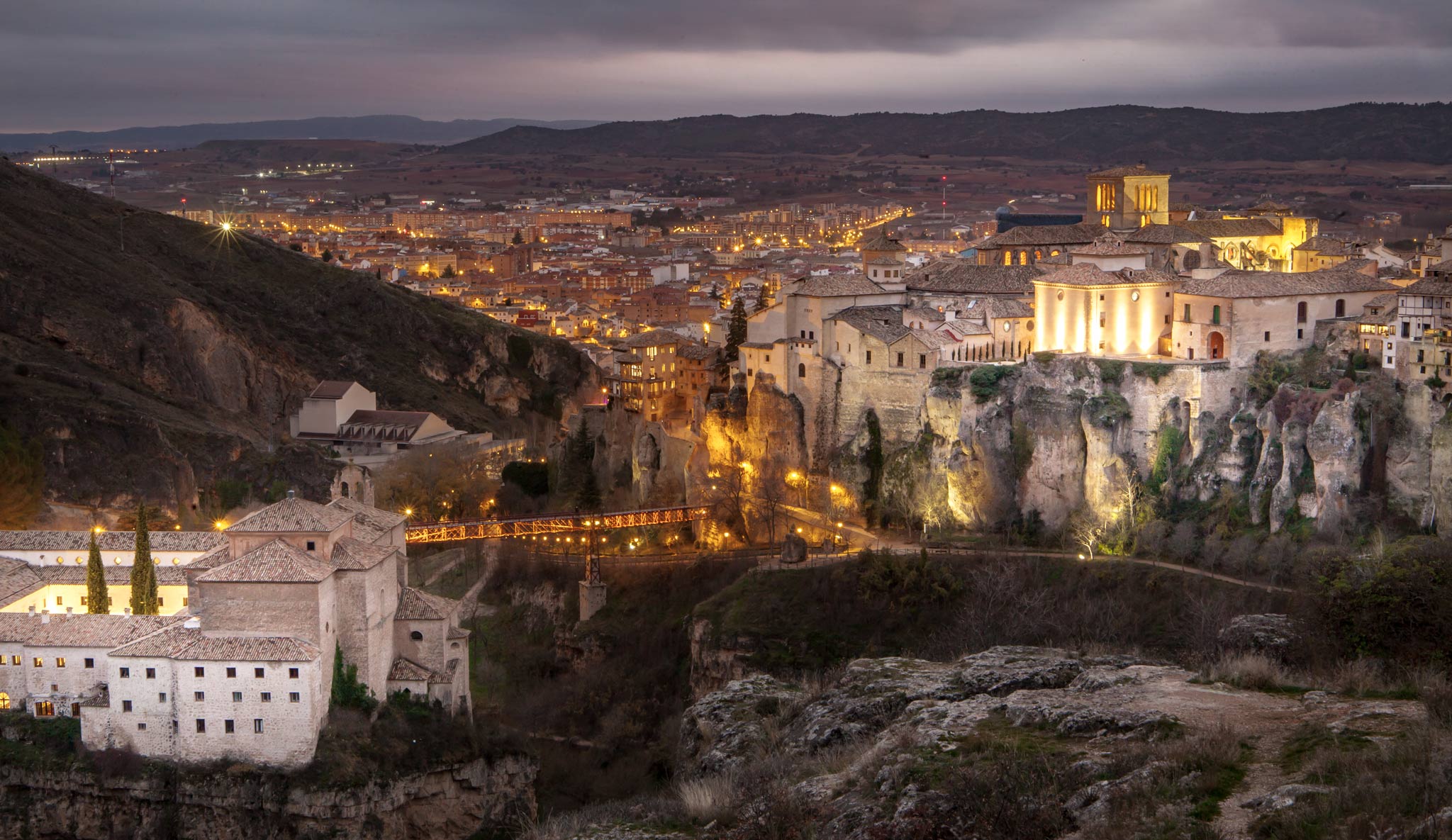
Cuenca, for charming historical vistas
This seriously underrated hidden gem in Spain was a joy to discover. While most online discussion around this medieval city is on the Casa Colgados, the hanging houses which seem to dangle off the side of the rock, the whole old city is magical and deserving of its UNESCO world heritage status.
Perched upon a rock and with a history that can be traced back around 1300-years, the colourful houses, castle ruins, and Cathedral packed with architecture spanning various time periods come together to provide another world like feel.
Stepping into Cuenca is like stepping back in time. The surrounding nature of the karst mountains, coupled with the crystal blue river, provides an incredible adventure playground and one of the more unique places to visit in Spain.
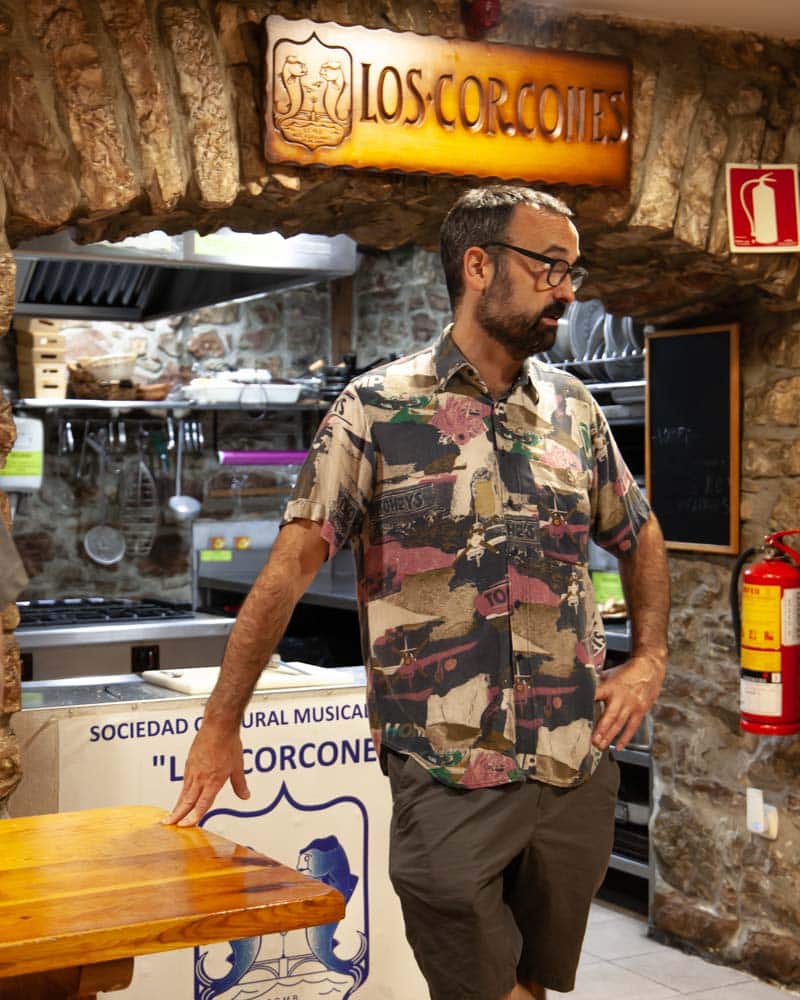
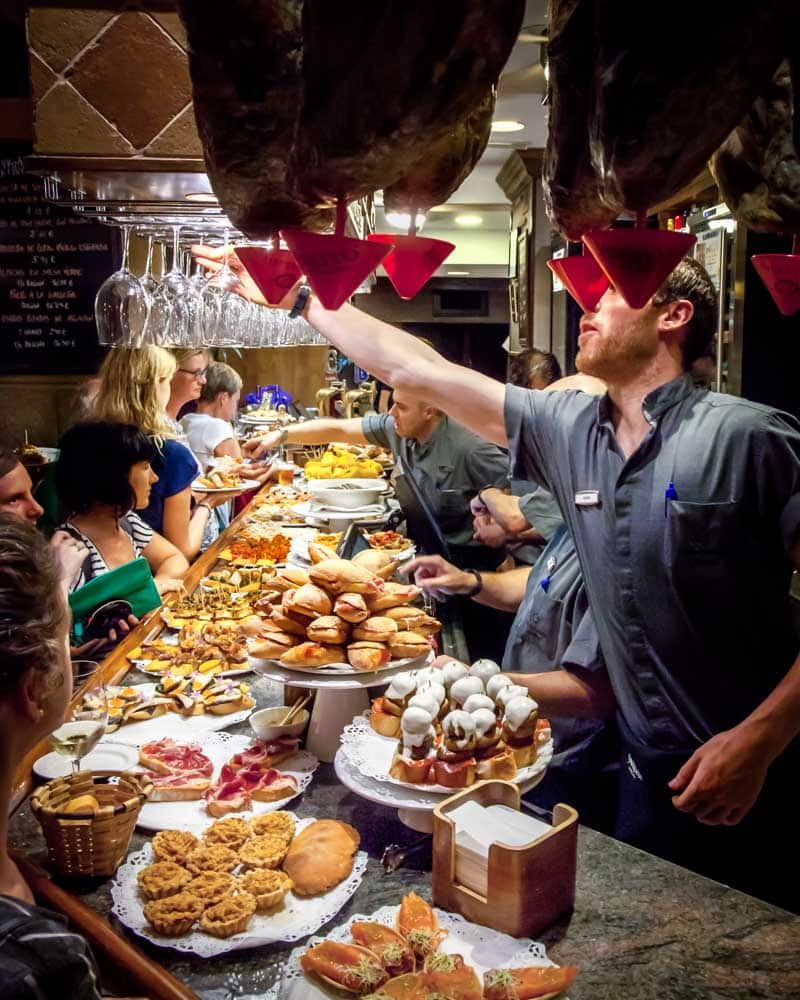
San Sebastián’s underground food scene
While San Sebastián is certainly a famous destination already, thanks to its prime position on the Basque coast, and wonderful mix of city and beach, it wasn’t until I took a 10-day food tour through Spain that I learned about the gastronomic world in the basements of these streets.
There are, in fact, around 150 Gastronomic societies (txoko in Basque) in San Sebastian. Due to the small houses and apartments in the city, these communal member-only cooking spaces flourished as a perfect place to host large family get-togethers over a delicious feast.
You could say gastronomy runs in the blood of the residents of San Sebastián, and these hidden Spain spaces are a testament to that. Each member has their own key and 24/7 access. Different families will often be cooking simultaneously, sharing recipes and dishes over laughter.
While you need to be invited by a member to enter one of these societies, some tour options, like I did, will get you privileged access to enjoy a home-cooked feast in these spaces. The foodie scene in San Sebastian is certainly famous, but these underground caves are one of the most unique places to visit in Spain – if you can get an invite! (Update: You can now book one of these private underground cooking club experiences online).
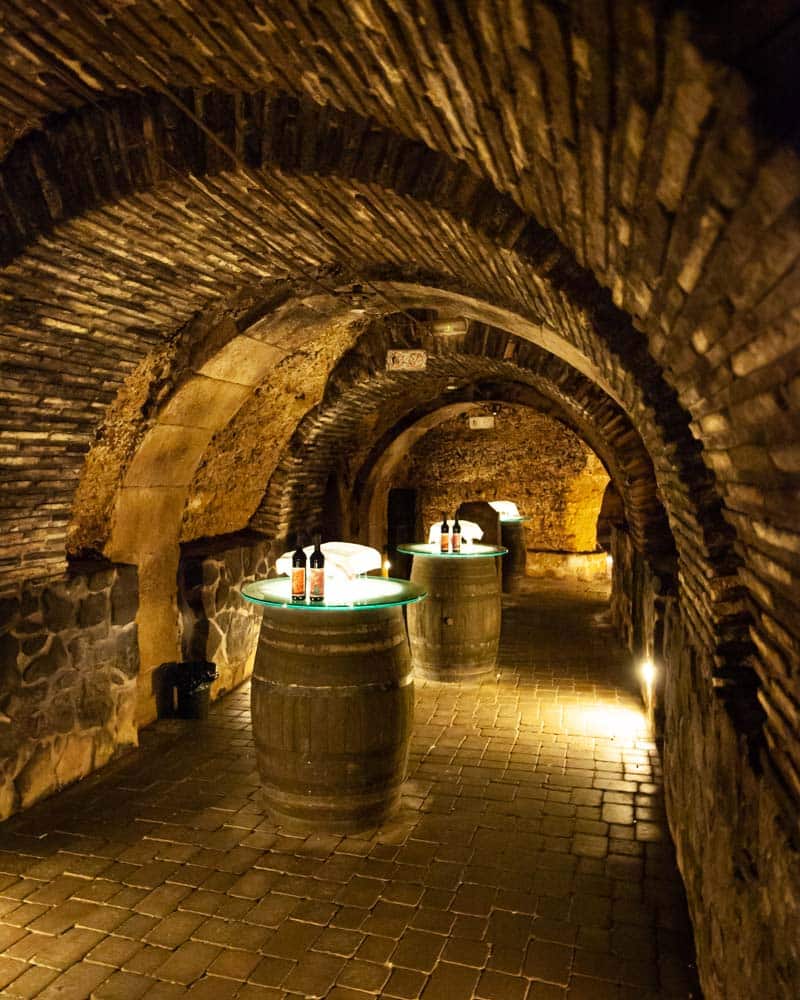
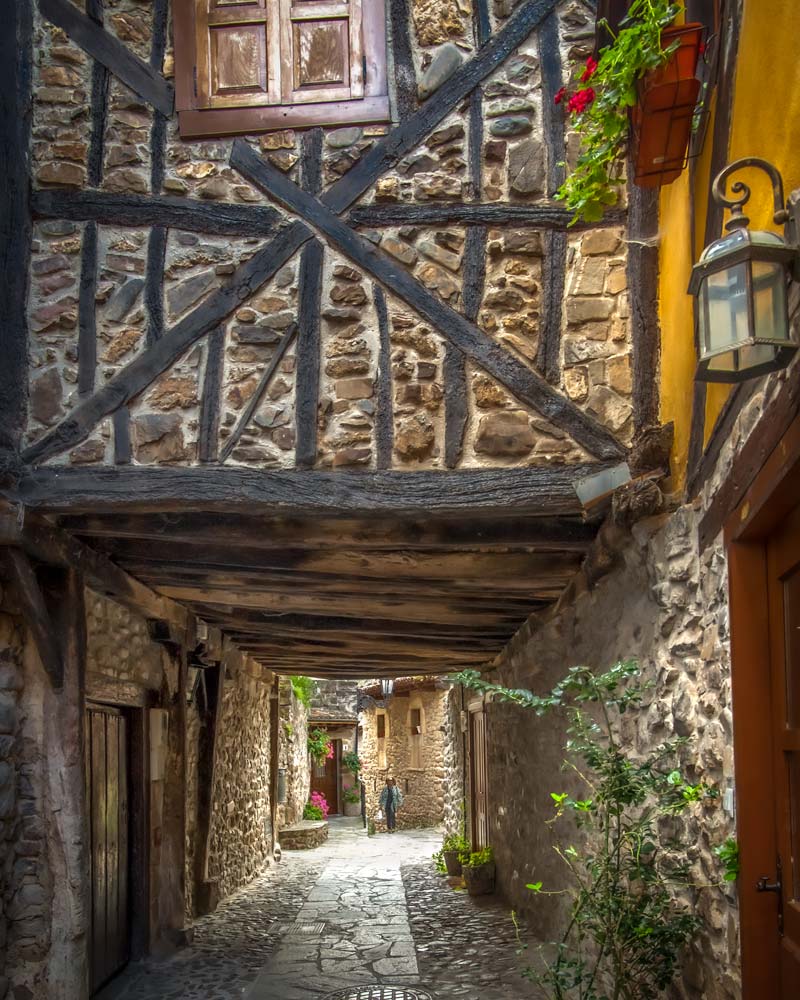
Potes, for a medieval mountain escape
One of Cantabria’s most dreamy villages, tucked away Potes is the perfect example of hidden Spain. Here, you’ll be invited to slow down and step back in time. Set against a backdrop of verdant mountains, with the soundtrack of the river running through, you get a real mix of old and new, nature and urban.
Be sure to hit up the market in the square, where stallholders will shower you with samplings of local cheeses and cured meats, perfect for crafting a picnic in the nearby mountains. Then, stroll through the ancient streets marvelling at how some of the old wooden framed houses are still standing.
This is a slow-down destination, with the mountains and lush landscapes of the national park on your doorstep. An ideal escape from the noise of the world. Head here for hiking, reading, and quality countryside cuisine and to find your own secret Spain.
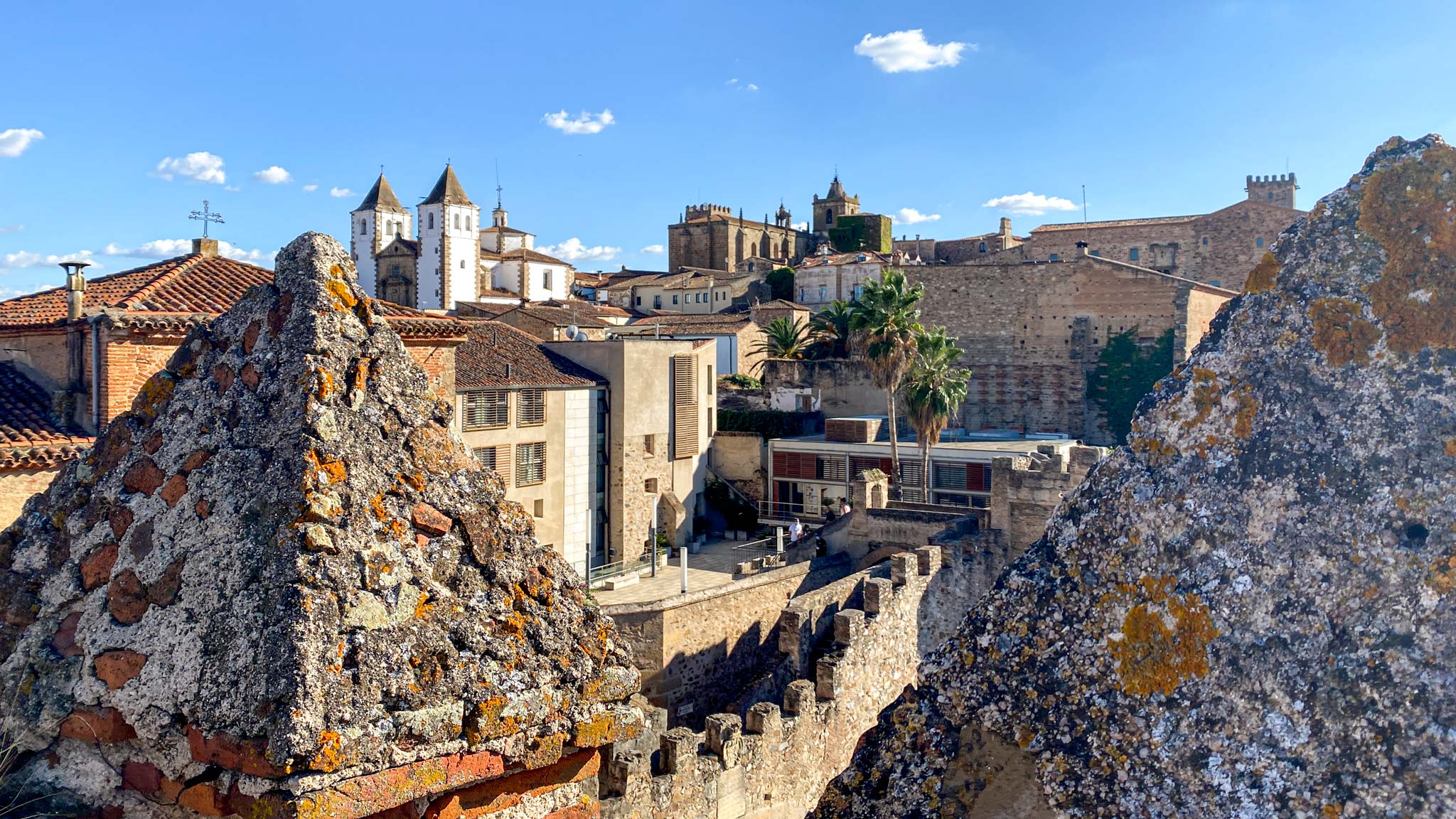
Cáceres, for medieval scenes
Cáceres’ historical core is enjoying a moment. Having been featured on Game of Thrones – it was part of Kingslanding – the spotlight has been turned on this provincial capital.
Inside the Old City Walls (be sure to walk them), you’ll find a Middle Ages atmosphere and plenty of serenity. Hobble along historic cobbled streets, admire the medley of Gothic, Renaissance, Roman and Morish architecture, and understand why UNESCO granted the city World Heritage-listed statues.
This region, Extremadura, is not only rich in architecture, though. It’s a land of quality gastronomy, culture and heritage. It was the birthplace of the famous and true Jamon Iberico (cured ham), so you can expect the tastiest cuts at reasonable prices. Let’s see how long this remains off the beaten path in Spain for us international visitors.
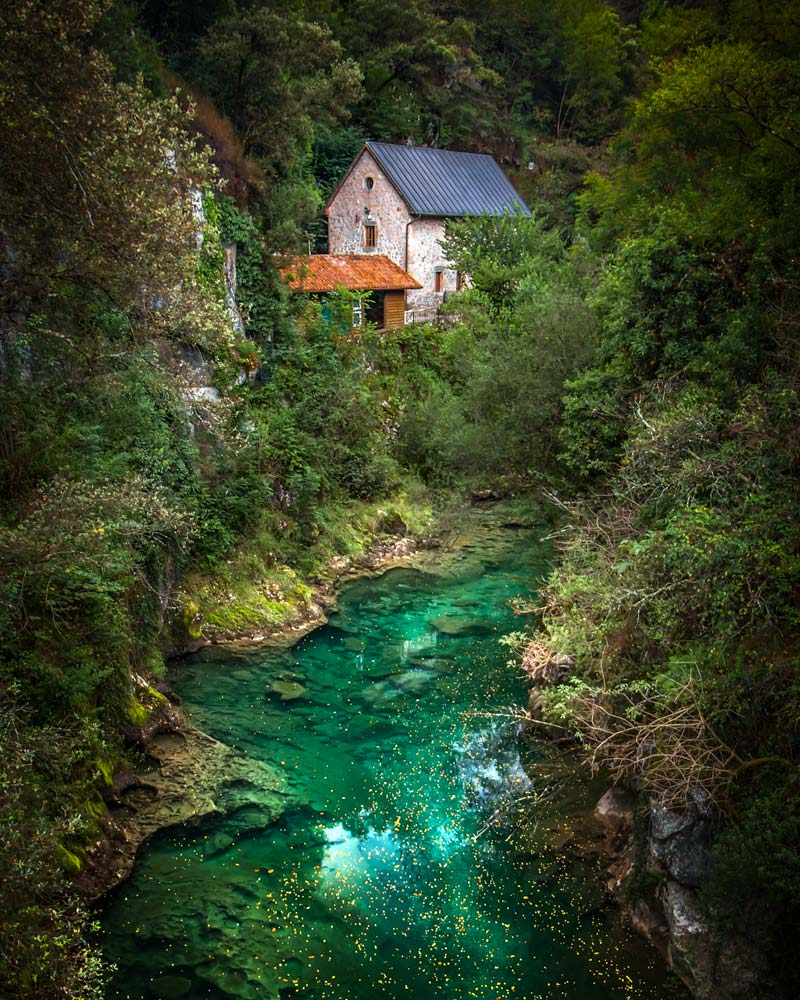
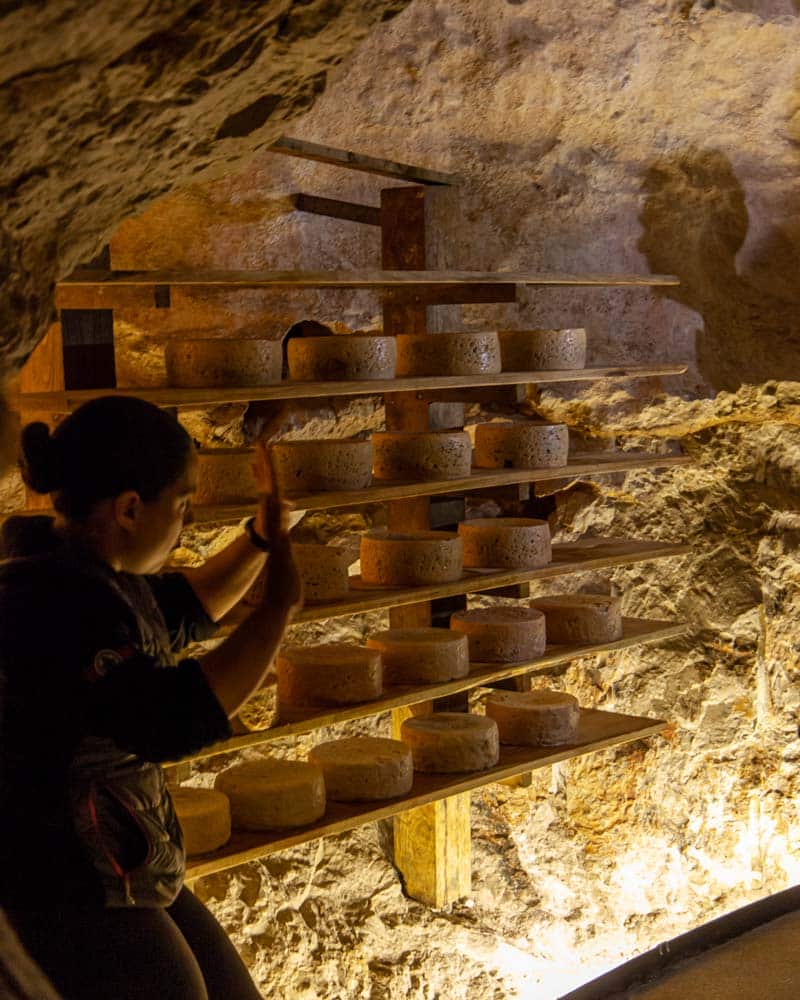
Cabrales, and the hidden cheese caves
When you think of going off the beaten path in Spain, do you imagine yourself in a damp cave eating a rather intense cheese? Well, in Cabrales, set amongst the mountains of the Asturias region, that is precisely what awaits.
Head towards Las Arenas, and here you’ll find the Cueva del Queso de Cabrales museum, one of Spain’s most unique places to visit. You’ll be walked through the production method and taken inside the caves for a tasting of this award-winning blue cheese, still produced by rural farmers until this day.
Not only is the setting a nature lovers’ dream, but here it is all about slow travel, regional produce, and great hiking trails. Cabrales is best included as part of a trip to the Picos de Europa mountain range.
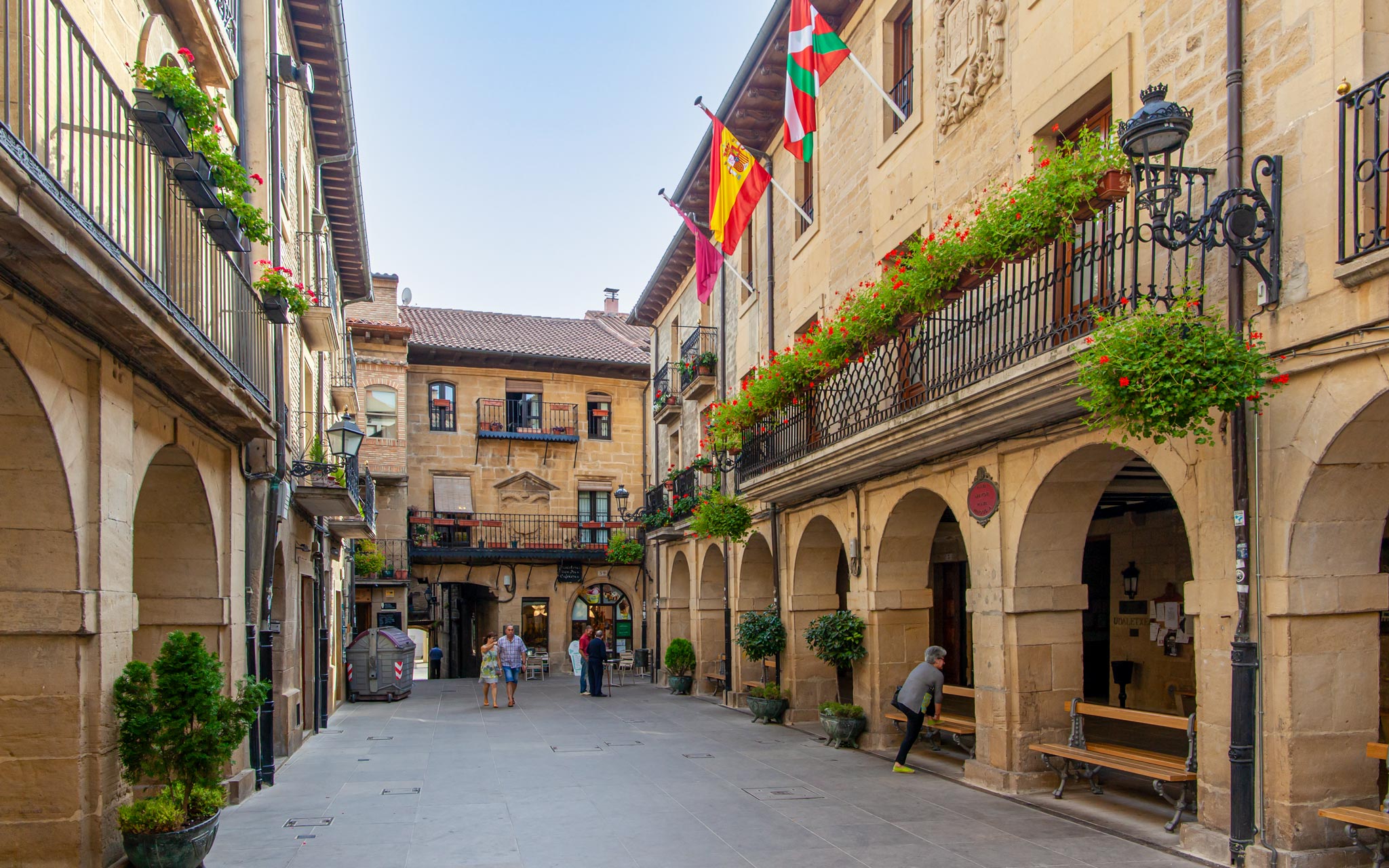
Laguardia, one of Spain’s most beautiful villages
While beautiful Laguardia might be somewhat of a hidden gem, the region’s wine, Rioja, is not. This delicious and full-bodied red is one major pull – but that is far from the only reason to visit.
This walled town, albeit with fewer intact walls since the last war, is one of those fairytale destinations. The five imposing entrance gates will bring you into a maze of tiny streets, now home to only a few thousand people. Due to some 250 tunnels underneath these streets, vehicles are mostly banned to stop them from collapsing.
Of course, you wouldn’t be doing Laguardia justice if you didn’t indulge in a bit of wine tasting. To do this, you’ll get the chance to see some of those underground tunnels up close, where wine is still produced and stored.
Head into Bodega El Fabulista to learn about the traditional methods and for a tasting of their fabulous wines in the underground hidden Spain world. Then, enjoy a fantastic lunch set amongst a vineyard outside of the town’s walls at Villa Lucía Espacio Gastronómico.
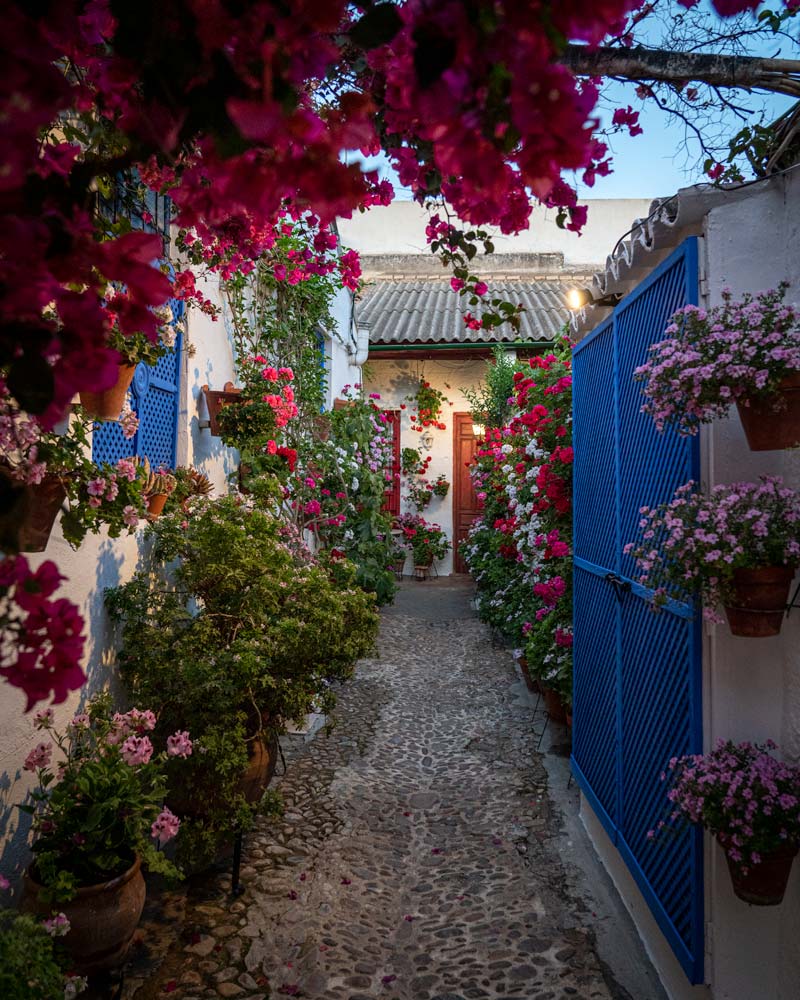
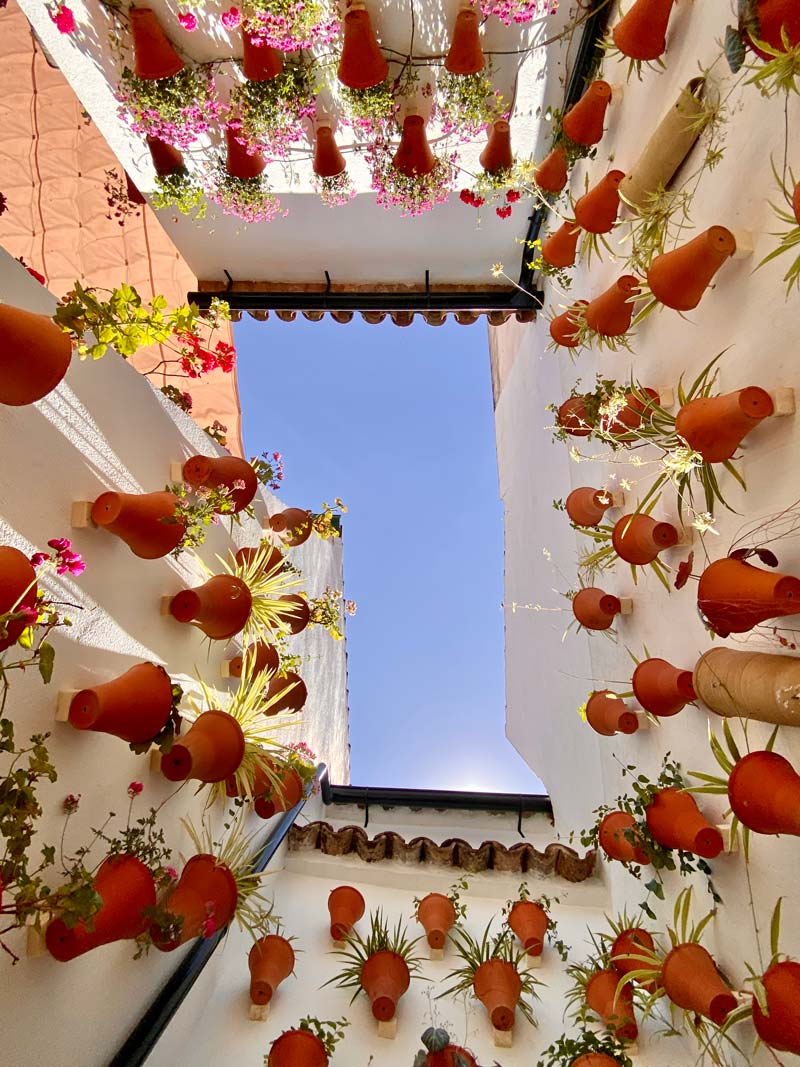
Cordoba, for the flower-filled patios
Cordoba itself isn’t really a secret Spain spot. But, if you visit during early May, you are in for quite a unique treat.
The Courtyard Festival (or Patio Festival) which dates back to 1918 – pausing during the Spanish civil war and thankfully later returning – is one of the best southern Spain hidden gems to take part in if you get your timings right.
Over the (usually) two-week festival, a selection of homes and other buildings open up their colourful courtyards, often decorated in countless flowers that otherwise would be off-limits to the public. The event is free, although donations are always welcome.
It’s a wonderful way to keep traditions alive, and there is even a competition for the best-decorated windows! It’s a great atmosphere, and makes the UNESCO-heavy city become one of the most unique places to visit in Spain for a couple of weeks. If you aren’t able to visit during early May, you might still be able to access some patios on a pre-booked private guided tour.
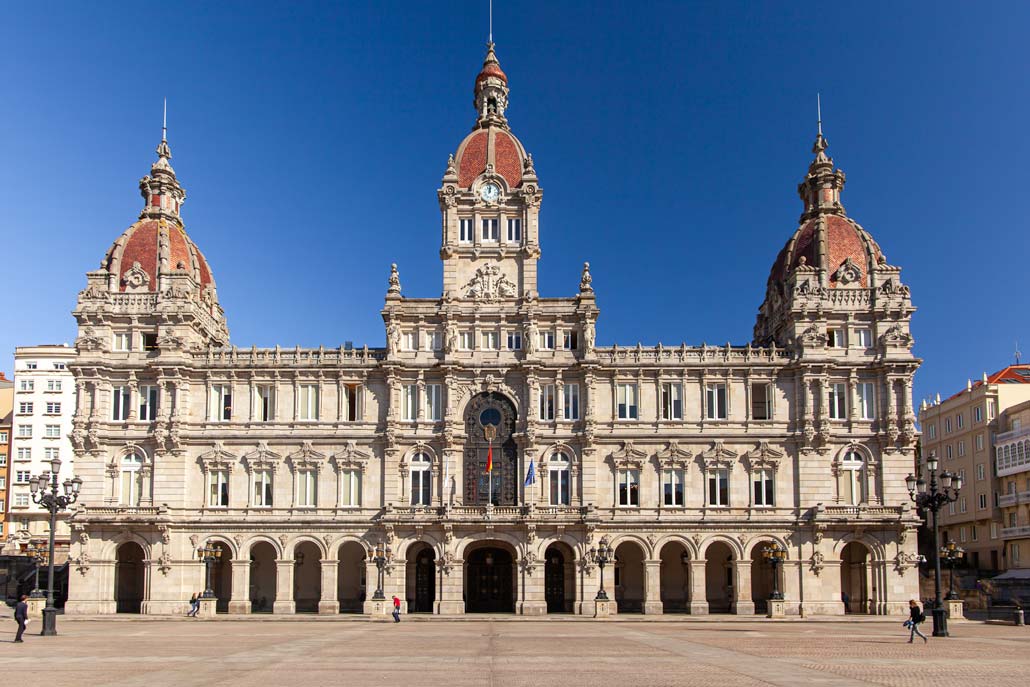
A Coruña, for a seafood degustation
While most travellers to Galicia find themselves marvelling at the Santiago de Compostela Cathedral, head to the region’s second – yet more populous – city of A Coruna to use as a base to explore the hidden gems on the Galician coast.
Famed for the daily fresh catch and passion for Seafood, your taste buds are guaranteed a treat in A Coruna. Pulpo Gallego (Galician-style octopus), is a must-try local dish.
In the city itself, admire the impressive Plaza de María Pita or dip into the fascinating Domus Museum, which focused on the human body. Later, head out to the coast for rugged, windswept trails and the oldest lighthouse known, the Tower of Hercules.
The Galician culture and language are on full show here too, and one of the greatest joys for me about travelling through the ‘hidden gems in Spain’ is learning the differences between the regions. Did you know, for example, the traditional instrument here and in northern Portugal is the gaita, a type of bagpipe?
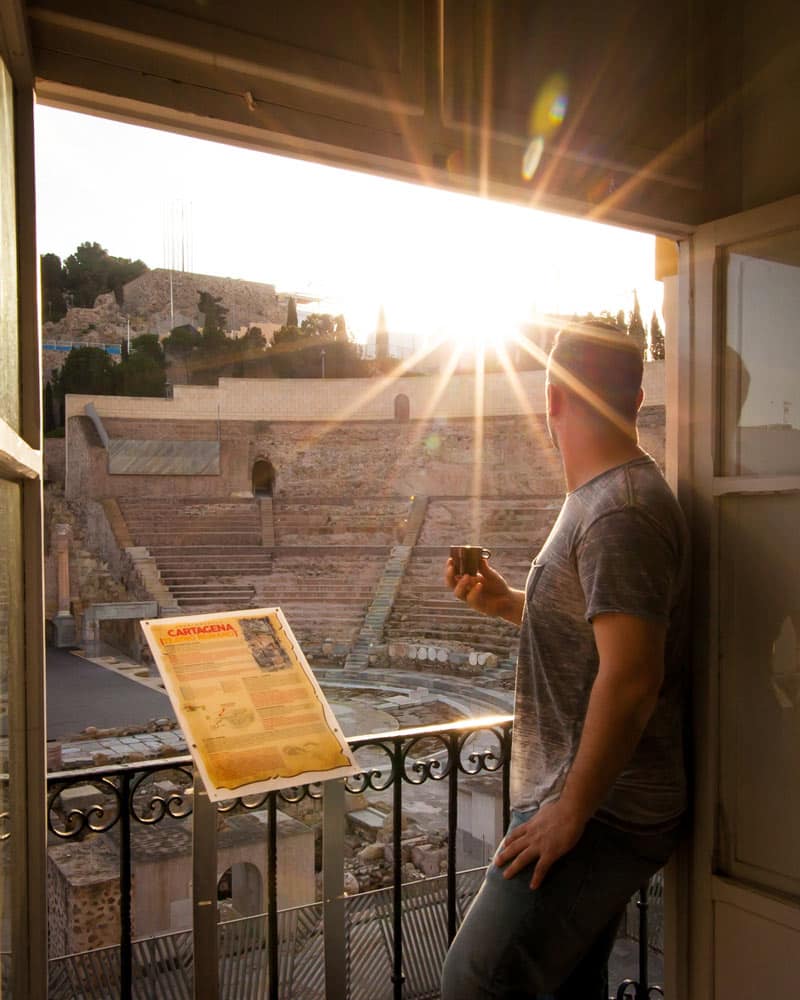
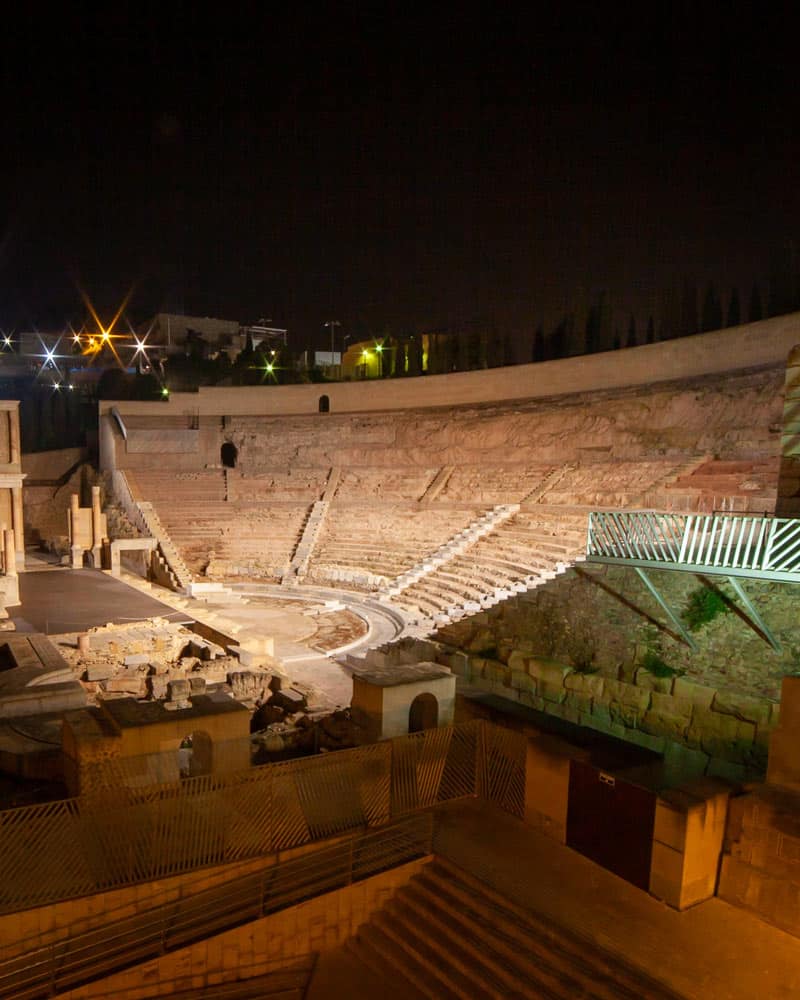
Cartagena, for understated archaeological treasures
This hidden gem in Spain, situated on the coast of the Murcia Region, was somewhere I had zero expectations of before I visited – and it’s fair to say I was pleasantly surprised. So much so, I’ve returned for a second weekend visit. Founded by the Carthaginians some 2200 years ago, history is stacked upon history here.
The Roman Amphitheatre, now bizarrely sandwiched in between graffiti-stained walls and tapas restaurants, is, of course, the star of the city. However, the vast collection of museums and Roman ruins that can be visited, fantastic gastronomy and wine scene, and the almost criminally low prices when compared to, say, Barcelona, make this a city I just feel into the rhythm of.
You’ll also find great value wine and tapas in the city – especially compared to some of Spain’s more touristed cities – and decent beaches just a short hop along the coast.
Make time to visit the National Museum of Underwater Archaeology, where you can admire shipwrecked artefacts. Step inside the now roofless ruins of the Old Cathedral of Cartagena, and explore any of the countless historical museums and sights dotted around the city. Following a huge project in 2022, the Roman-focused history museum is much more impressive and without the crowds, is a relatively hidden Spain spot to step back in time.
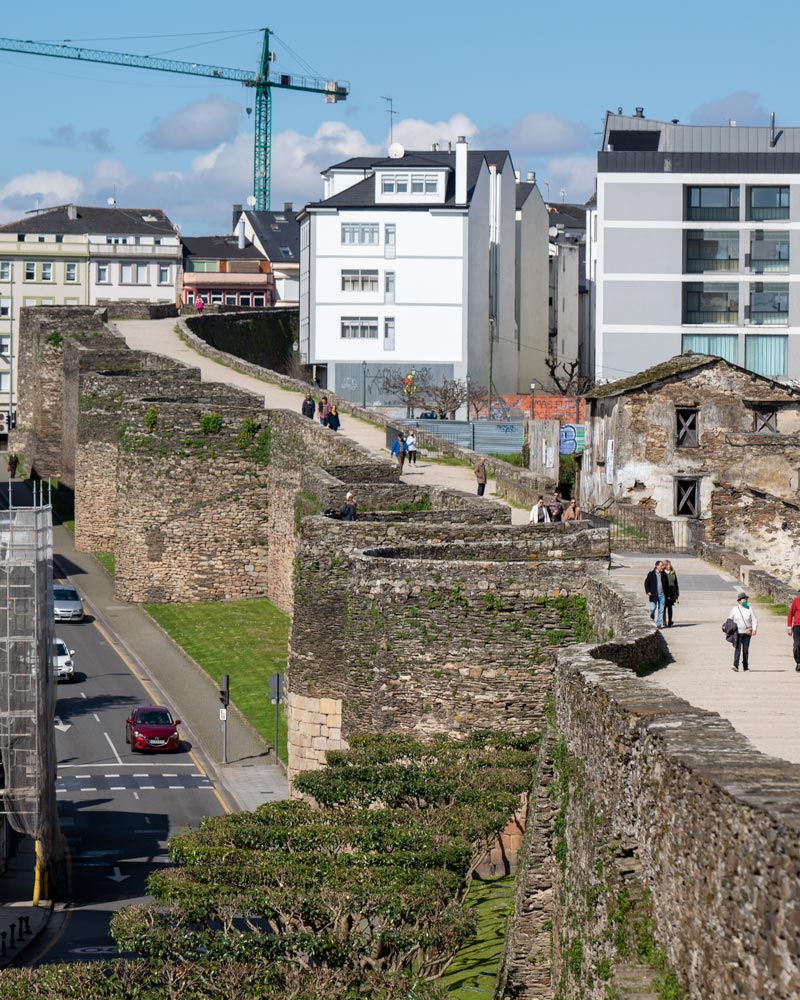
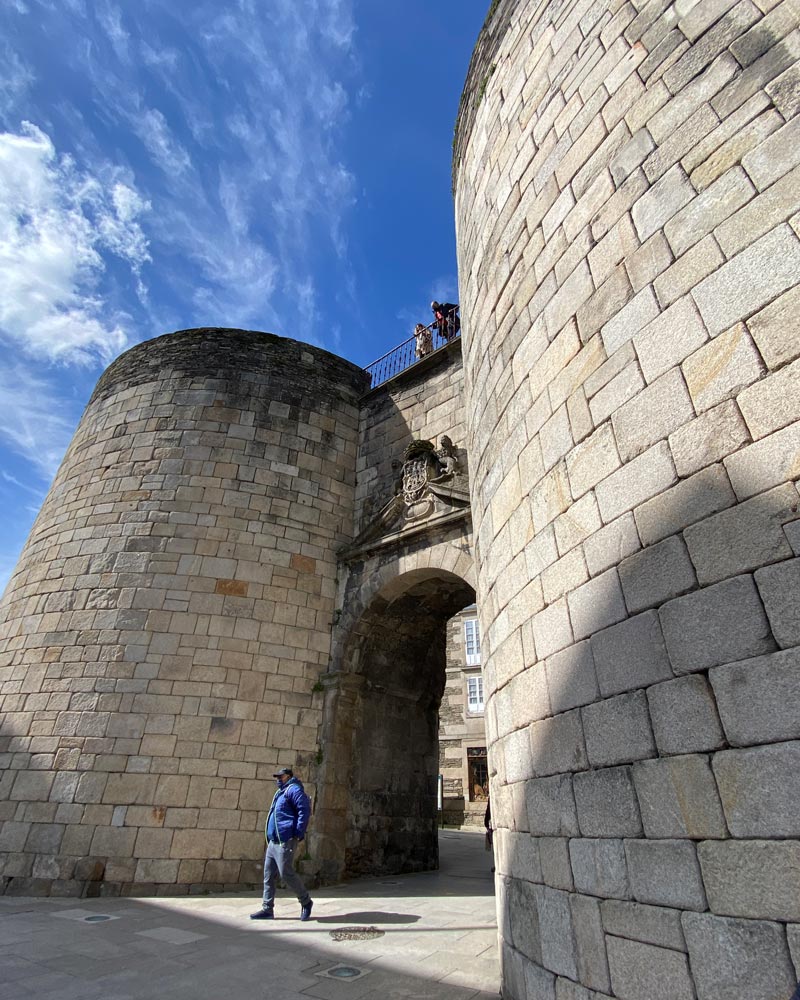
Lugo, for the Roman walls
For a slice of Roman history in the heartlands of Galicia, look no further than Lugo. This is a great side trip or addition if you’re already visiting Santiago de Compostela.
Most notable are the city’s Roman walls. Lugo is the only place in the world where the old walls remain complete, encircling the whole of the Old Town. So, while Roman ruins aren’t so rare in the country, it’s the walls that make it one of the most unique places to visit in Spain.
Better still, you can walk the loop of the walls for an aerial view over Lugo, allowing you to retrace the steps of the past civilization. Dating back to the 3rd century, this is one of Spain’s most impressive World Heritage Sites.
Back on ground level, you’ll find more Roman history to discover. Inside a more modern spa, you can find the Roman Baths, of whih some of the original rooms still remain. However, the city’s Roman bridge has sadly been reconstructed multiple times since its inception.
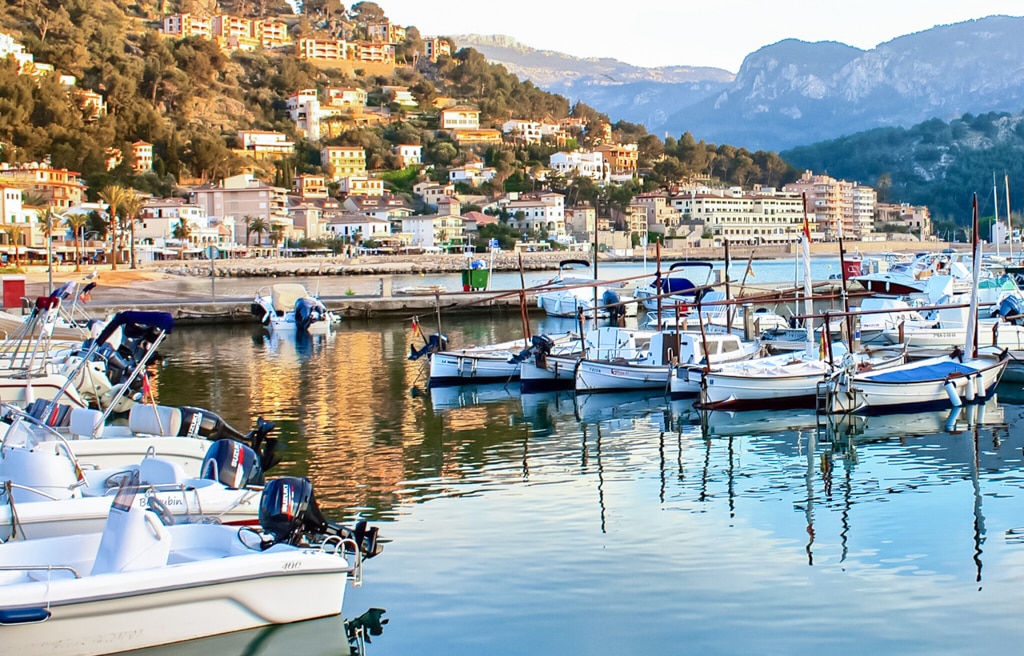
Port de Sóller and the ‘hidden gems’ of the Balearics
While the nightclubs of Ibiza, or Magaluf, might be the first thing that comes to mind when considering the Balearic islands, between the four main islands, and many smaller ones, there are plenty of Spanish hidden gems to be found – even if perhaps they feel like one of the most common places to visit in Spain.
Ibiza, for example, long known for its hedonistic nightlife, is enjoying a moment in the spotlight. As islanders try to reimagine the destination as a year-round luxury offering, the island’s more untouched and nature-filled side is becoming more popular.
High-end dining options and serene Ibiza villas are luring in a different type of traveller to the island more and more often. Whether you head to the quieter beach resorts of Santa Eulalia and Portinatx or to the peaceful interior, you’ll find a side of Ibiza a far cry from late-night parties.
Likewise, even on the ever-popular island of Mallorca, there are pockets of secret Spain and calm to be found. Go hiking in the Tramuntana mountains. Escape on the slow train to port de Sóller. Or, simple, take a city break in the capital of Palma, where refined cocktail bars and creative culinary restaurants offer a totally different side of island life to the Magaluf strip.
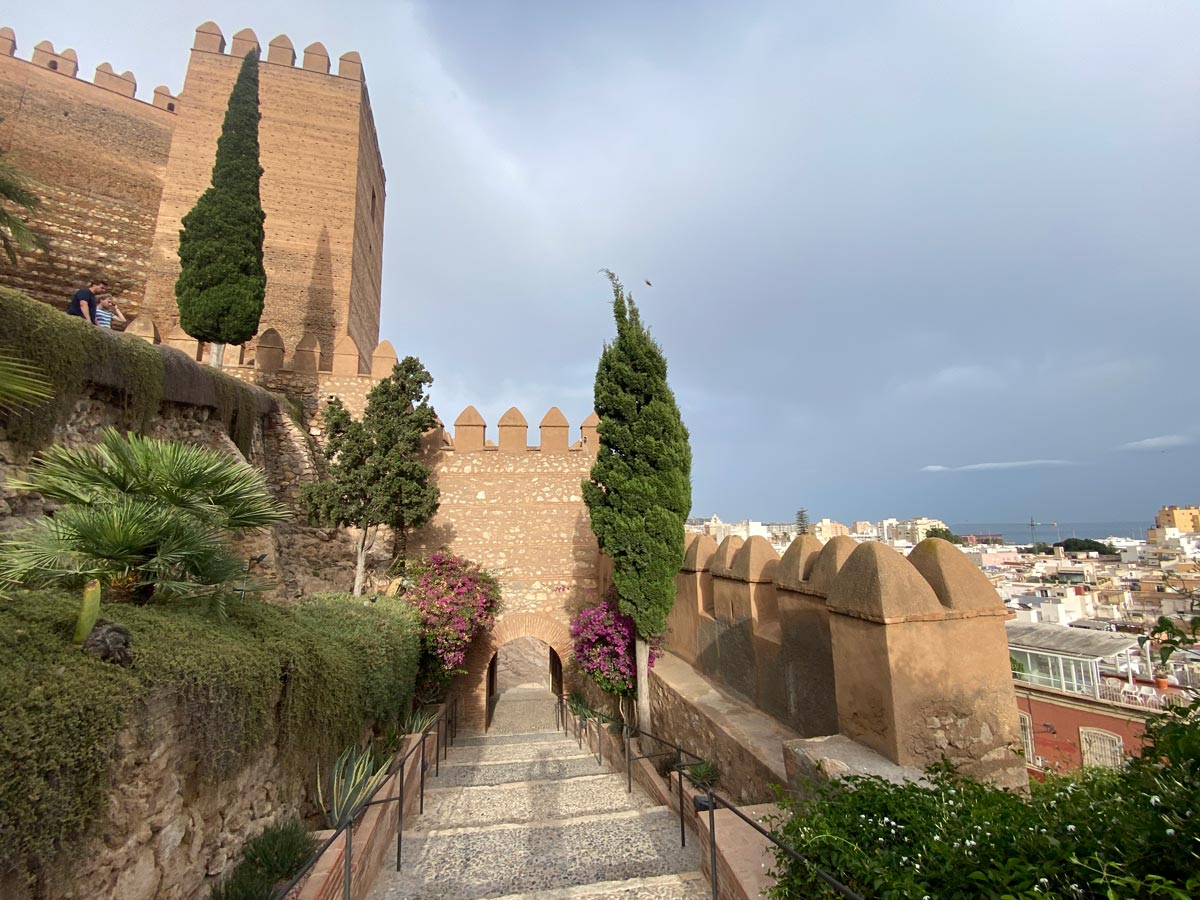
Almeria, for the Alcazaba
If you’ve ever done a Skyscanner anywhere flight search to Spain, Almeria Airport has likely popped up. This has led the local area and coast to become a popular holiday destination.
But, before making a beeline to the beach, it’s well worth exploring the city itself.
Backed by the Sierras of Almeria – a parched mass of mountains – the city exudes a little desert vibe. That is a strange point to make for a coastal destination. Yet, those credentials are backed up. Just a 30-minute drive inland, you’ll find an area (and visitable park) often used to film Wild West-style movies.
Almeria is crowned by its Alcazaba, which is the main – but not the only – draw to the city. An imposing fortification constructed under Moorish rule in the 11th century, it’s the second largest in the country. The grandest being Granada’s Alhambra. Nowadays, you can roam inside the citadel, witnessing the engineering marvels of water fountains and irrigation for the gardens. Inside, you can imagine what life behind the walls would have been like many centuries ago.
